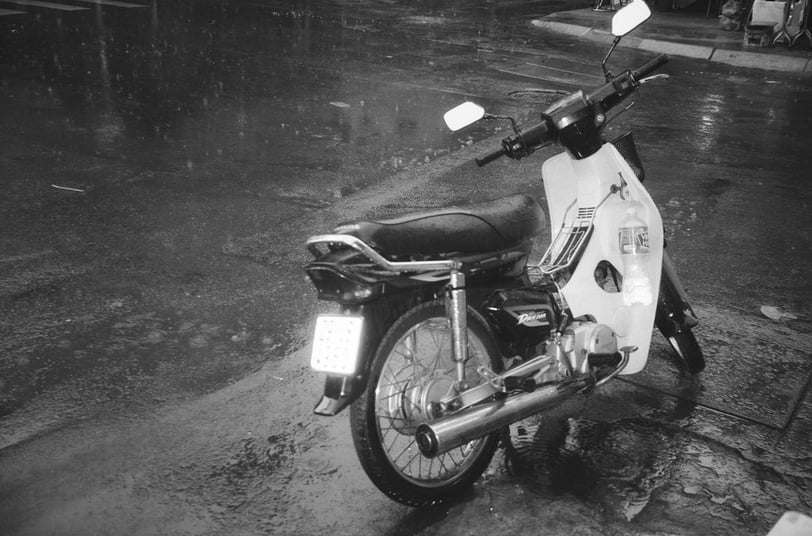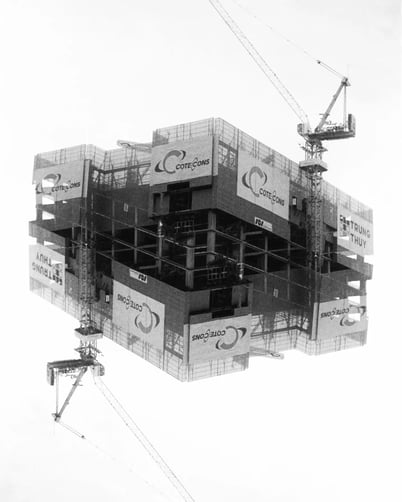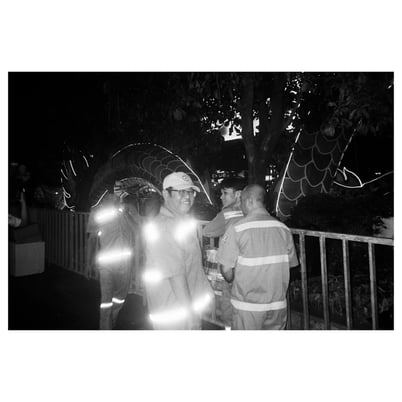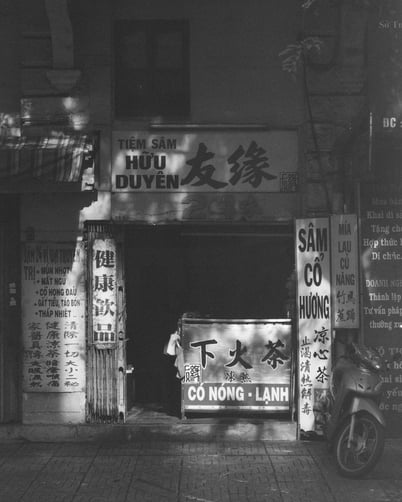Black and white film photography, with its timeless aesthetic and unique artistic expression, continues to captivate photographers worldwide. This comprehensive guide will delve into the fundamental principles, techniques, and creative approaches that will enable you to harness the power of monochrome photography.
Guide to Black and White Film Photography
Black and white photography transcends the limitations of color, allowing photographers to focus on essential elements such as light, shadow, texture, and composition. By eliminating the distractions of color, photographers can concentrate on the interplay of these elements to create powerful and evocative images.
Understanding the Essence of Black and White
Key Considerations for Black and White Film Photography
Light and Shadow:
The interplay of light and shadow is paramount in black and white photography. Pay meticulous attention to the direction and quality of light to create dramatic effects and highlight textures. Consider the use of side lighting, backlighting, and natural light to achieve diverse moods and atmospheres.
Contrast:
The contrast between light and dark areas is a fundamental aspect of black and white photography. Experiment with different lighting conditions to achieve the desired level of contrast. High contrast can create a dramatic and intense look, while low contrast can result in a softer and more subdued image.
Texture:
Texture plays a significant role in black and white images. Look for subjects with interesting textures and consider how they are highlighted by light and shadow. The interplay of textures can add depth and visual interest to your photographs.
Composition:
Strong composition is essential in black and white photography. Utilize techniques like the rule of thirds, leading lines, and framing to guide the viewer's eye and create visually appealing images. Experiment with different compositional elements to find what works best for your subject matter and desired effect.
Film Choice:
The choice of black and white film stock can significantly impact the look and feel of your images. Consider factors such as grain, contrast, and sensitivity when selecting a film. Fine-grained films can produce sharper images with less visible grain, while coarser-grained films can create a more textured and vintage look.
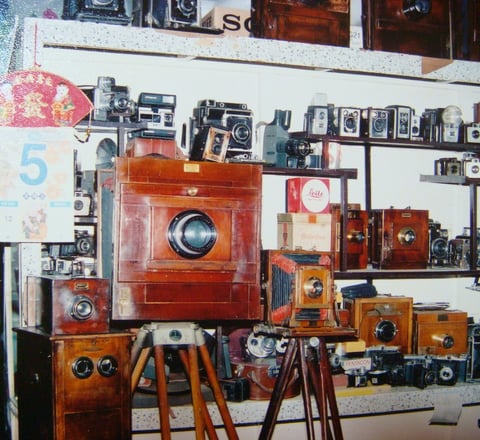

Essential Techniques for Black and White Film Photography
Exposure:
Experiment with different exposure settings to achieve various effects. Underexposure can create a dramatic, high-contrast look, while overexposure can result in a softer, more ethereal feel. Consider using a light meter to ensure accurate exposures and avoid underexposure or overexposure.
Developing:
The developing process plays a crucial role in determining the final appearance of your black and white images. Consider factors like developer choice, temperature, and time to achieve the desired results. Experiment with different developers to find the one that best suits your style and preferences.
Printing:
Printing black and white images can be a rewarding experience. Experiment with different papers, toners, and techniques to create unique prints. Consider the characteristics of different papers, such as their surface texture, tone range, and archival qualities.
Choosing the Right Black and White Film
Your First Black and White Roll of Film:
Ilford HP5+ or Kodak Tri-X are excellent choices for beginners due to their versatility and forgiving nature.
Film For Labs That Only Develop Color Film:
Ilford XP2 is a black and white film that can be developed in color film chemistry, making it convenient for those who only have access to color labs.
Classic Black and White Film Look:
Ilford HP5 pushed to 800, Kodak Tri-X, Fomapan, or Delta 3200 pulled can create a classic, timeless look.
Archival Quality:
JCH Streetpan 400, Bergger Pancro 400, Agfa films, and Rollei films are known for their archival qualities, making them suitable for long-term preservation.
For Everyday Snapshots:
Kentmere 100/400 or Fomapan are affordable options for everyday photography.
Street Photography:
Tri-X or JCH Streetpan 400 are popular choices for street photography due to their versatility and ability to capture candid moments.
Low Light:
Ilford Delta 3200 is a high-speed film designed for low-light photography.
Portraiture:
Delta 100/400 or Ortho 80 are suitable for portrait photography due to their fine grain and smooth tonality.
Landscape:
SFX 200 is a popular choice for landscape photography due to its wide exposure latitude and ability to capture fine details.
Sharpest/Finest Grain:
Delta/T-Max films are known for their sharpness and fine grain.
Widest Exposure Latitude:
Ilford XP2 offers a wide exposure latitude, making it forgiving of overexposure or underexposure.
Push/Pull Flexibility:
Ilford HP5+ is a versatile film that can be pushed to higher ISO speeds or pulled to lower ISO speeds for creative effects.
How to choose black & white film?
The choice of black and white film can significantly impact the look and feel of your images. Here are some recommendations based on different shooting scenarios:
Saigon on Film: Capturing the City's Essence in Black and White
Early Morning and Late Afternoon Light:
The soft, diffused light of early morning and late afternoon is ideal for capturing the city's atmosphere in black and white. These times of day offer long shadows and warm tones that can create dramatic and evocative images.
Street Scenes:
The chaotic energy of Saigon's streets can be beautifully captured in black and white. Look for interesting compositions, interactions between people, and unexpected moments that reveal the city's character.
Architectural Details:
Saigon's diverse architecture offers a wealth of photographic opportunities. Focus on details like intricate carvings, ornate doorways, and contrasting textures. The interplay of light and shadow on architectural elements can create striking and visually interesting images.
People:
The people of Saigon are the city's heart and soul. Capture their expressions, gestures, and interactions to create intimate and evocative portraits. Consider using candid photography or posing your subjects to convey specific emotions or stories.
Saigon, with its bustling streets, vibrant culture, and rich history, offers a captivating subject for black and white film photography. The city's diverse architecture, bustling markets, and iconic landmarks provide ample opportunities to capture stunning images.
Tips for Shooting Saigon in Black and White:
Black and White Film Development
Safety First:
Wear safety glasses and latex gloves to protect yourself from developer chemicals.
Mixing Solutions:
Dilute developer, stop bath, and fixer with water following the manufacturer's instructions for each.
Developing the Film:
Pour developer into the tank, agitate for the recommended time. Replace with stop bath to halt development, then agitate. Finally, add fixer, agitate initially and periodically, to remove unexposed silver halides. Rinse thoroughly.
Drying the Negatives
Hang the film with a clip in a clean, dust-free space to dry for several hours. Gently squeegee the film with a squeegee tool or your fingers (wearing gloves) to remove water droplets.
Scan
Once dry, store your negatives or scan them for further creative exploration.
Developing your own black and white film offers creative control but requires safe handling of chemicals. Here's a simplified overview:
Beyond the Basics: Exploring Advanced Techniques
High Contrast:
To create a dramatic and intense look, push the contrast in your images by underexposing or using a high-contrast developer. This technique can emphasize textures, shapes, and details.
Soft Focus:
For a more ethereal and dreamlike effect, use a soft focus lens or defocus the background. This technique can create a sense of mystery and romance.
Silhouettes:
Silhouettes can be a powerful tool in black and white photography. Position your subject against a bright background and underexpose to create a silhouette. This technique can emphasize the subject's shape and form.
Double Exposures:
Experiment with double exposures to create unique and surreal images. Combine two different scenes or subjects on a single frame for a visually intriguing effect.
Experimental Techniques:
Don't be afraid to experiment with unconventional techniques to push the boundaries of black and white photography. Try using filters, manipulating the developing process, or combining multiple exposures to create unique and visually striking images
In addition to the fundamental techniques discussed above, experienced black and white photographers often employ more advanced techniques to enhance their images. Here are a few examples:
Black and white film photography is a timeless art form that offers endless possibilities for creative expression. By understanding the key principles and techniques, you can create stunning images that capture the essence of your subjects and tell compelling stories. Experiment with different approaches, explore the city's diverse offerings, and let your creativity flow.
Additional Tips:
Join a Photography Community:
Connect with other photographers to learn from their experiences, share your work, and receive feedback.
Take a Photography Course:
Consider taking a photography course to learn more about composition, lighting, and other technical aspects of photography.
Experiment and Have Fun:
The most important thing is to experiment and have fun with black and white film photography. Don't be afraid to try new things and step outside your comfort zone.
By following these guidelines and embracing the unique characteristics of black and white film photography, you can create stunning images that capture the essence of Saigon and tell compelling stories.

